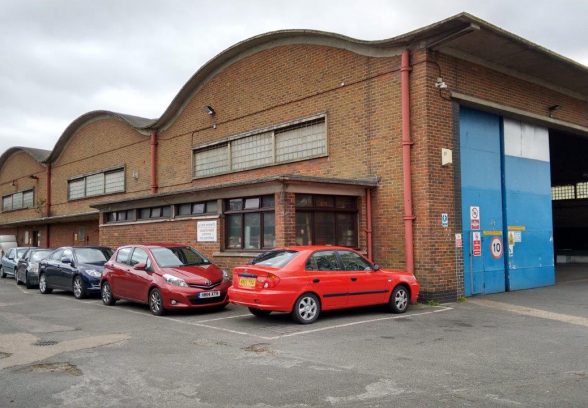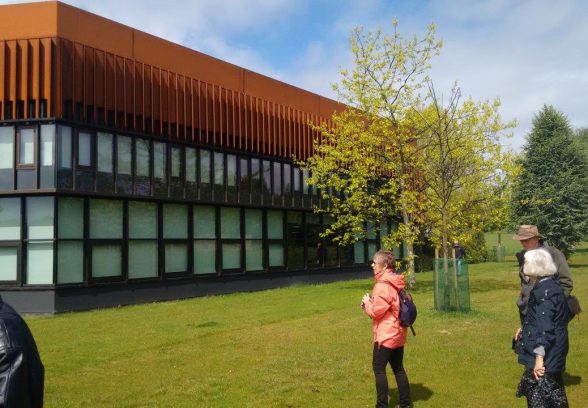This website uses cookies
This website uses cookies to enable it to function properly and to analyse how the website is used. Please click 'Close' to accept and continue using the website.




The Southern group’s May event was a walking tour of Chichester, led by members Colin Hicks and Neville Hopkins, which aimed to highlight some of the notable C20 buildings that are often overlooked on standard architectural visits to this Georgian town.
The well-organised tour introduced us to examples of 1950s/60s public architecture where the refurbishments bear little relation to the original features. At the railway station, for example, only the distinctive wall clock remains. Of particular interest was the 1950s bus garage, built for Southdown Motors, with its thin shell pre-stressed concrete ‘wavy’ roof which created an unobstructed floor space. Sadly, it now faces an uncertain future.
We admired the classic art deco facade of the Crown and County court of 1940, with its evident Swedish design influences. More recent is the 2006 extension to the Pallant House Gallery (Long & Kentish architects with Colin St John Wilson), which offers a pleasing juxtaposition to the Grade I-listed Queen Anne house.
Moving on to the Grade II*-listed Chichester Festival Theatre (Powell and Moya, 1962) with its open thrust stage, we could see the bold use of concrete in the structure and the new extension blending sympathetically with the original building.
Chichester library (F.R. Steele, 1967) was an opportunity to see an example of unaltered modernist architecture. The circular structure with its striking roof and curving staircase were greatly admired. (Since our visit the building has been listed Grade II by Historic England.)
On the other side of the road stands the Novium Museum (Keith Williams, 2012), with its innovative cube-like structure, incorporating a golden rectangle proportion in the west elevation.
Next we enjoyed an excellent guided tour of the C20 artworks in Chichester Cathedral, including the vivid colours of the John Piper reredos and the red Chagall stained glass window. Following this, our attention was drawn to a small example of Grade II-listed brutalist architecture, which was originally designed as student accommodation for the theological college, but is now part of a rest home.
To conclude our visit to Chichester we looked at the innovative Avenue de Chartres car park of 1991, which effectively mirrors the city wall and screens the multi-deck car park.
All in all this was a very illuminating event, offering a novel perspective on the development in the town.
Bobbie Dawson

Become a C20 member today and help save our modern design heritage.